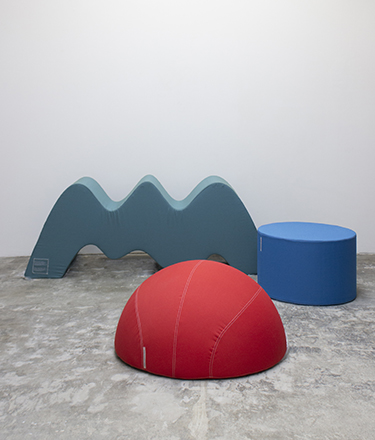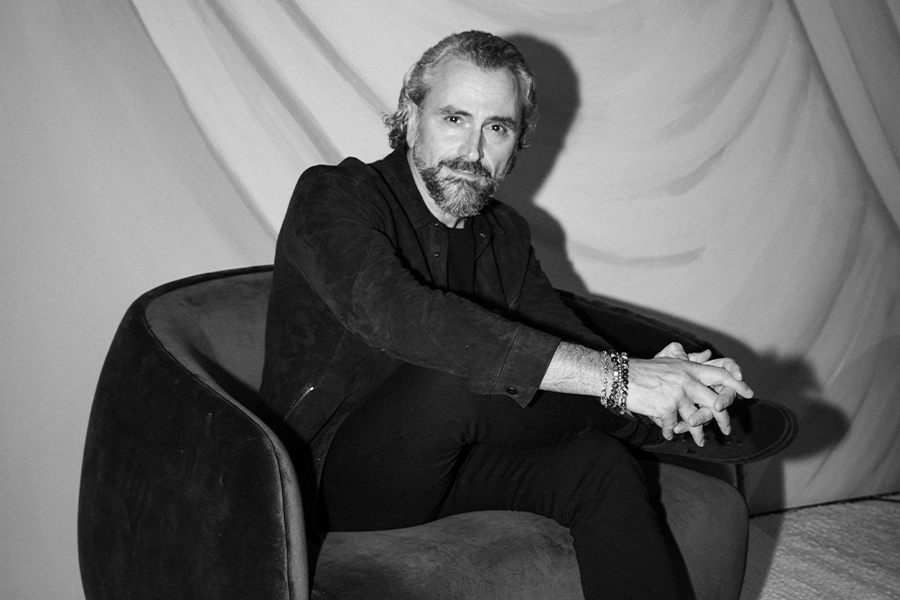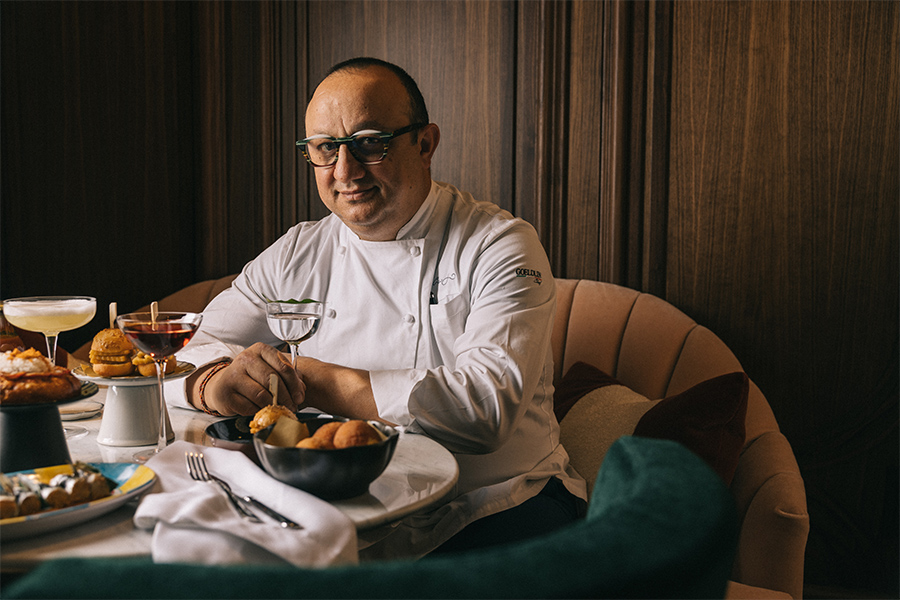What most appeals to London-based Kusheda Mensah about modular furniture is its democratic nature. “It gives the user agency. You get to decide how it works for you, not the other way around,” says the British-Ghanaian designer known for her interlocking creations. “Modularity represents possibility. Life isn’t static—our homes change, our relationships shift, our needs evolve. I’m interested in creating pieces that can grow with you and adapt with you, without stress.”
Consider her graphic Palma poufs for Swedish furniture brand Hem, launched at this year’s edition of 3daysofdesign in Copenhagen. A reimagining of the hand motif she envisaged for Mutual, her debut collection unveiled in 2018 at Salone del Mobile, they are “welcoming forms that invite people to sit, sprawl, or gather in informal ways. They’re playful but intentional,” Mensah explains. Upholstered in a variety of hues and fabrics, the poufs easily morph between footrest, seating, and sculptural statement.
 Although Palma marks Mensah’s first furniture release in what she describes as “a big marketplace,” she has wooed fans through various collaborations throughout the years. She’s transformed recycled foam and post-consumer recycled PET fabrics into furniture for Adidas, for example. Further, to commemorate the 70th anniversary of the Desert Boot from Clarks Shoes, she designed the Desert Raft as part of Apartamento magazine’s celebration. For the London Design Festival in 2024, Mensah also delved into the ever-changing role of leather in Un-hide: Reframing Luxury, an installation at the V&A South Kensington. “My work has always revolved around creating spaces for people—whether physical, emotional, or cultural,” says Mensah.
Although Palma marks Mensah’s first furniture release in what she describes as “a big marketplace,” she has wooed fans through various collaborations throughout the years. She’s transformed recycled foam and post-consumer recycled PET fabrics into furniture for Adidas, for example. Further, to commemorate the 70th anniversary of the Desert Boot from Clarks Shoes, she designed the Desert Raft as part of Apartamento magazine’s celebration. For the London Design Festival in 2024, Mensah also delved into the ever-changing role of leather in Un-hide: Reframing Luxury, an installation at the V&A South Kensington. “My work has always revolved around creating spaces for people—whether physical, emotional, or cultural,” says Mensah.
It’s a natural inclination for Mensah, who “grew up around women who shaped their environments intuitively,” she says, whether it was rearranging rooms for functionality or improvising beauty rituals. “Those small daily acts of care and creativity were my first design lessons. They taught me that objects aren’t just things; they’re tools for connection.”
Mensah’s designs also reflects her Ghanaian heritage. Currently, Mensah is embracing her roots in surface design (she holds a degree in the field from the London College of Communication) and bolstering it with Ghanaian textile knowledge passed down by her mother to dream up fabrics that tell stories. Garments in Ghana are embedded with symbols, and there are certain expectations and codes for what is worn at events. “It’s a nonverbal way of speaking with one another,” she says, and she thinks her designs have that same pull, silently drawing in people through their tactility and color.
“Ghanaian culture values togetherness, and that shows up in everything from food to architecture to how we greet each other,” Mensah adds. It’s a spirit of communal life that reinforces the notion that “you’re nothing without community.”
This article originally appeared in HD’s August 2025 issue.


